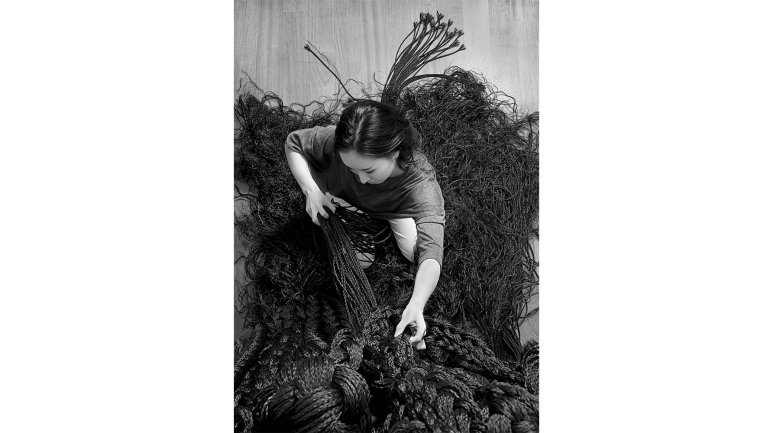A Way of Knowing
A Way of Knowing
Why does art education matter? I pondered that question as we put together this issue on learning and the future. Art is no longer on the schedule at many schools, as Joyce Lovelace and Mark Richard Leach point out in their sampling of organizations that are stepping in to fill the gap. So what have we lost? What’s at stake?
For me, and I suspect many others, art has brought self knowledge and, ultimately, self acceptance. Making things has helped me embrace who I am – something I didn’t actually realize until I read a passage in Deborah Bishop’s story about Yuni Kim Lang. Born in Korea and raised mostly in China, Lang struggled to fit in, even among her Korean American classmates at Parsons School of Design. “They found me confusing,” she remembers. “I never felt authentic.”
What? Others’ confusion made her feel like an imposter? Think about this, and the meaning becomes clear: When you’re young, you often take your cues from others. If they don’t understand you, well, maybe you don’t make sense. I felt this way in high school, where it felt imperative to choose a group – the jocks, the theater geeks, the brains, the partiers – and to mold your identity to fit that group. Anything that made me seem other than one-dimensional – my quirky family, my test scores – I kept under wraps. Because the worst thing I could be, as Lang puts it, was an “in-betweener.” To be between is to be confusing, inauthentic, an indecipherable nobody.
The road to understanding yourself and feeling authentic isn’t linear. Under pressure from her practical parents, Lang studied graphic design at Parsons. It didn’t resonate. Then she studied jewelry design – also unsatisfying. At last, at Cranbrook Academy of Art, Lang found her métier – and herself. “Finally free to approach art as a conceptual expression rather than a commodity, Lang chose to explore her fascination with sculptural work relating to the human body,” Bishop writes. And since earning her MFA in 2013, Lang has celebrated, not run from, her individuality. She makes knots that nod to traditional Korean handcraft, but she cuts them, unravels them, and stitches them into “weird, lopsided, irregular things,” she says. “Because that’s who I am – an amalgamation of all these different cultures.”
As an artist, Lang learned to care more about being coherent, or true, to herself than to others. That’s a shift that happens not only in the mind but also in the body. There’s something about the physicality of making that can transform your understanding of yourself. What you gain is a kind of holistic “somatic knowledge,” as the philosophers term it, that’s uniquely powerful. Embodied knowing changes everything.
I once took a week off from work to make an assemblage about a theological idea I’d been wrestling with. It felt hugely risky; what if I ended up wasting a chunk of precious vacation time on a bad idea? What if I couldn’t make what was in my head? I worked 14-hour days, stopping only to eat, run out in paint-spattered garb to the hardware store, and shush my noisy internal critic.
In the end, my assemblage was not what I’d envisioned. But I loved it — loved it. More than anything, I learned from making it. Not just about the mechanics of assemblage but about murky parts of myself: my spiritual beliefs, my creative rhythms, how my brain and hands connect, how I could transform a wispy notion into an actual, physical piece of art.
As thousands of laid-off art teachers could attest, making something is an intense encounter with your own essential, idiosyncratic self. What matters more than that?




